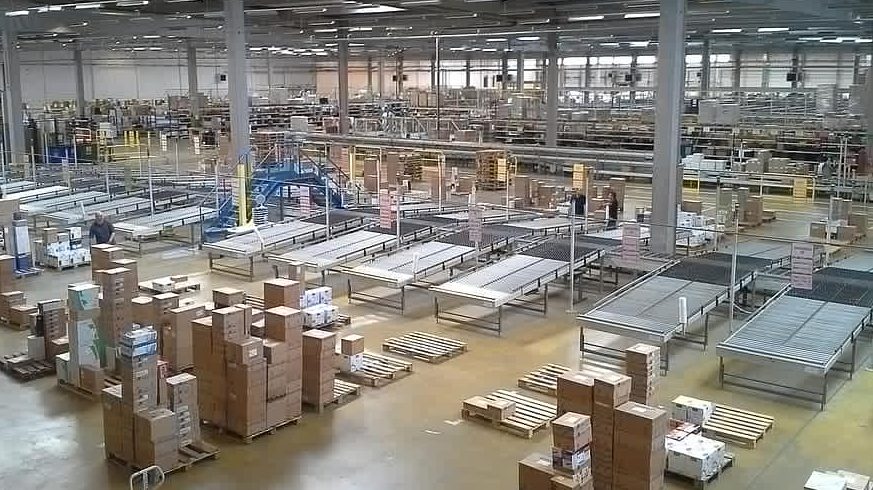
COVID-19 brought with it a massive upset which troubled food supply chains globally. For months, supply chain stoppages froze North American access to European and Asian food and consumer goods, especially those from hardest hit regions like Italy. Closer to home, North American food supply chains also struggled to meet demand, with producers even circumventing distribution centres in order to reach store shelves faster.1
But different parts of these supply chains struggled in different ways. A notable variance can be found in comparing the supply chains of ambient and cold storage foods. Despite similar levels of demand throughout the peak of pandemic panic-buying, frozen goods supply chains and other products in need of temperature controlled environments saw greater and more consistent upsets than ambient food chains. These differences were manifested by several key shortcomings in the cold storage supply chain and were exacerbated by the necessary requirements faced by supply chain professionals working in cold storage.
The Ambient Food Supply Chain Advantage
While not all ambient food is non-perishable, all non-perishable food is ambient. As such, many ambient products can be produced, packaged, shipped, and sold, all while retaining months- or years long shelf stability. The majority of the upsets faced by ambient food supply chains came about as the result of spikes in demand and corresponding scarcity in consumer goods; these manifested as gluts and stockouts at various points in the supply chain as logistics companies struggled to find solutions.
However, the ambient supply chains did not need to worry about keeping the integrity of the product intact or, at least, they didn’t need much intervention and critical infrastructure to do so. Producers of ambient food products are also in a position to negotiate better rates as their product is easier to handle and more uniform. Warehouses can be designed to densify their systems more easily for this type of product.
In contrast, the cold storage supply chain experienced a demand spike for frozen goods in March and April – wherein 86% of consumers purchased frozen goods including 7% that had never purchased them before – with very few means to manage the supply chain disruption.2 Part of this disruption was because of the unprecedented nature of the pandemic event; part of it could have been avoided with more widespread use of current technology.
Outdated Cold Storage Software
As reported by Forbes, public refrigeration warehouses (PRWs) have been slow to embrace newly available technologies to manage inventories, shipments, and efficient packing.3 A reticence to embrace new software systems purpose-built for such supply chains could in part be linked with how PRWs have historically functioned—as small, privately run entities often operating on little more than a phone call and a handshake.3 Naturally, informal and analogue systems don’t easily lend themselves to the quick reorganization required by a pandemic-induced upset. The result of this lag found in many PRWs manifests in an inability to quickly resolve systemic or structural issues as they arise, which only causes more lags as orders and inefficiencies pile up.
Lack of Automation
This inefficiency is compounded by another kind of reticence, this time surrounding the adoption of widespread industry-standard automation. Cold storage, especially processes of picking, packing, and storing efficiently, are extremely time consuming activities for workers which can also be prone to human error. Completely integrating automated processes is both a time and capital intensive process, but the volatility of demand and the extreme disruptions of these supply chains as demonstrated this year prove how integral and industry-changing automation would be.
The adoption of automated systems to address labour inefficiencies will not only save PRWs money, they’ll increase output and efficiencies to, in turn, draw in more capital. As Tom Steininger wrote, “… clearly without a move toward automation, PRWs will continue to struggle to fill demand, mitigating profits and stakeholder returns.”3
This kind of automation can also better preserve the product; for example, installing electronic thermostats enables the integrated control of the compressor, the evaporator fans, and the defrost heater to ensure a moderated and constantly monitored environment. “This level of information-gathering technology has become key for customers as they expect smart tech to enhance their system,” says Paul Waldeck, executive director, Ambrey Baker Industrial Solutions.4
Beyond the economic incentives, of which there are many, automated systems may also be useful to limit employee density down on the warehouse floor. This aspect of employee safety will likely remain critical in the coming years as life after COVID-19 proceeds.
Unfavourable Working Conditions
Employee safety and working conditions are plights not unfamiliar to the cold storage supply chain. In fact, cold storage and its accompanying supply chains can see high employee turnover and find it difficult to properly rack warehouse floors because it is such an inhospitable environment. Generally speaking, PRWs are kept between -10 and -20 fahrenheit to preserve the integrity of the food products.3 These very physically laborious working conditions have made the labour market in the cold storage supply chain tight for years. Adding in the new realities of COVID-19 safety—for example, no seating in break rooms, fewer staff on the floor, staggering breaks—can make work here extremely unforgiving, further hindering the ability of cold storage supply chains to meet shifting consumer demand during the pandemic..5
These obstacles are not entirely exclusive to cold storage supply chains, but they do overwhelmingly afflict those supply chains which require extensive capital investment in equipment and systems to preserve goods. Ambient supply chains, by contrast, were largely able to pivot services and SKU offerings to create regular delivery schedules and more consistently sized pallets to efficiently circumvent distribution centres.
